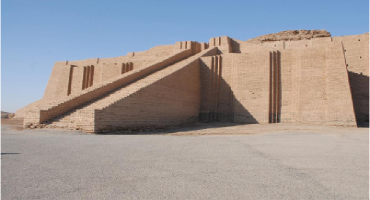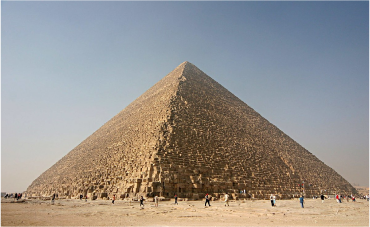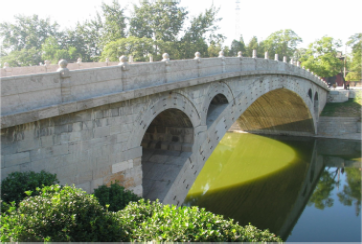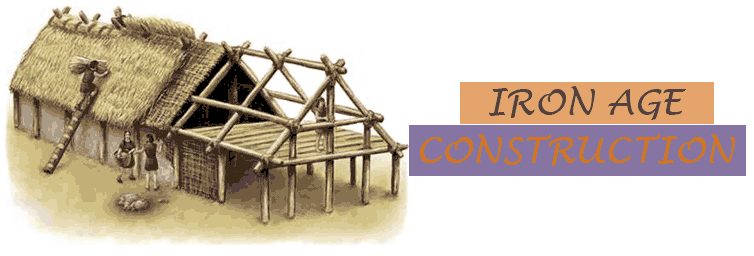History is how we portray the world around us in the past. Construction history is not only restricted to buildings but also includes the evolution of civil engineering and infrastructure. Here is a brief to understand the dating structures and particular techniques used during Iron Age.
Iron Age Construction
The Iron Age is between 1200 BC to 50 BC, with the wide use of iron for tools and weapons. In about 300 BC, steel was produced by adding carbon iron.
Construction in Ancient Mesopotamia:
The first large-scale buildings were found in ancient Mesopotamia. Primary technical achievement is evidenced by the great cities such as Uruk and Ur. The Ziggurat of Ur is an outstanding example of the period, irrespective of reconstruction works.

The chief building material was the mud-brick, formed in wooden moulds. By 3500 BC, fired bricks came into use and used for pavements along with stones. The later Mesopotamian civilizations, Babylon and Susa, developed glazed brickwork decorating the interiors and exteriors of the buildings.
Examples: Pergamon Museum in Berlin, Louvre Museum in Paris.
Construction in Ancient Egypt:
Due to the Arid climatic conditions, the pharaohs of Egypt built large structures in stone. Adobe(sun-baked mud brick) construction was used for ancillary buildings and houses in ancient times.
Example: The Ramesseum in Thebes, Egypt was one of the finest examples of mud bricks construction.
The Egyptians are known for using extraordinary feats of engineering and primitive technology in ancient history. They have invented many things like ramp, lever, lathe, oven, ship, paper, irrigation system, window awning, door, glass, plaster of Paris, lock, the bath, shadoof, measurement system, weaving, geometry, silo, saw, steam power, veneer, plywood, rope truss and more.

Outstanding Achievements of Egyptians: Great Pyramid of Giza (the tallest building in the world for over 3800 years), and Menkaures Pyramid, Giza.
Construction in Ancient Greece:
Most structures built by Greeks are out of mud-brick, leaving no record behind them. The Greeks discovered much advancement in technology including, plumbing, central heating, the spiral staircase, urban planning, the water wheel, crane, and more.

The oldest construction drawing in the world is in the Temple of Apollo at Didyma. Greeks did construct some groin vaults, arch bridges, and with the help of Egyptians, the first high rise known as Light House of Alexandria. Their surveying skills are distinguished, allowing them to set out the incredibly exact optical corrections of buildings like the Parthenon.
Roman Construction:
A very large amount of Roman Construction survives, including complete intact buildings like the Pantheon, Rome. The Roman development in building materials was the use of hydraulic lime mortar called Roman Cement.
An example of Roman concrete in the 1st century BC is the Temple of Vesta in Tivoli, Italy. The concrete was made of rubber and hydraulic lime mortar, which was cheap and very easy to produce.

The Romans also made bronze roof tiles. Lead was used for roof covering material, water supply and water pipes. They also used glass for construction, coloured glass in mosaics and clear glass in public buildings.
Romans invented the waterwheel, sawmill, and arch included Roman road construction such as corduroy roads, paved roads and sometimes supported on a raft or pile foundations and bridges. Roman construction ability extended over bridges, aqueducts and covered amphitheatres. Their sewerage and water supply works were exceptional and still in operation today.
Chinese Construction:
China played a crucial role in building construction in Eastern Asia. Many Far East building methods and styles were evolved from it, and the famous example is the Great Wall of China, built between the 7th and 2nd centuries BC. The wall is built with stones, rammed earth, wood, later bricks and tiles with lime mortar.
The oldest complete technical manual on Chinese architecture is the Yingzao Fashi. The Chinese people followed the same methods for thousands of years, so many of the ancient.

Here are a few outstanding examples of Chinese Construction:
- The oldest architecture is of wooden building Nanchan Temple (Wutai), dating from 782 CE. An important architectural element is the dougong bracket sets.
- The Sangyue Pagoda is the oldest brick pagoda dating to 523 AD, built with yellow fired bricks laid in clay mortar.
- The Anji Bridge is the world's oldest 'stone segmental arch bridge' built-in 595 - 605 AD with sandstone joined with dovetail, iron joints.
This blog is simply information about Iron Age. Stay in touch for our next post - Evolution of Building Materials and Construction, which will be advancements that humans made in different eras.



















thea
posted on Sep 1, 2021 5:02:29 PM